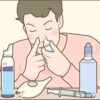Autumn and winter are peak seasons for respiratory diseases such as colds, flu, and pneumonia. Respiratory clinics often overcrowd.
Chronic obstructive pulmonary disease, bronchiectasis, interstitial lung disease and other chronic respiratory diseases.In autumn and winter, it will acutely exacerbat and even require hospitalization.
How to prevent the occurrence and acute attacks of these diseases and survive the winter safely as much as possible ?
Take the following steps to help patients:
1. Proper exercise to enhance physical fitness and immunity
The onset and recurrence of many respiratory diseases relate to the decline of the body’s resistance. It also closely relate to the poor ability to adapt to changes in the external environment.
Should adhere appropriate exercise to according to age and physical condition.
Such as brisk walking and jogging, breathing gymnastics, cold-resistant exercise and maintaining oral hygiene.
To enhance physical fitness and improve disease resistance.
2. Pay attention to keep warm to avoid catching a cold
Cold, especially the sudden drop in temperature, can reduce the defense function of the respiratory tract, which is conducive to the invasion of viruses and bacteria.
Cold can also make the inhaled gas insufficiently humidified, making the sputum sticky, the airway blocked, and the lung elasticity reduced.
As a result, it is more prone to repeated infections, leading to chronic inflammation.
3. Influenza and pneumococcal vaccines
For the elderly, especially those with chronic diseases.
Influenza and pneumococcal pneumonia vaccines are available in the fall to prevent influenza and pneumococcal pneumonia.
Give The flu vaccine once a year, and the pneumonia vaccine every five years.
4. Cope with air pollution and change the indoor environment
Minimize going out when the air quality is poor, and wear a mask when you must go out.
Use an air purifier indoors. It is best to use an air purifier that can remove smog and allergens and kill viruses, bacteria and fungi.
5. Smokers quit smoking
During the chronic bronchitis stage, controlling smoking behavior is the most important measure to prevent disease progression. Stopping smoking can stop or delay the disease and deterioration of lung function.
In addition, drinkers should stop drinking or limit alcohol, and the daily alcohol content should be less than 25g.
6. Balanced diet and reasonable nutrition
Take a mixed diet of meat and vegetables, and a mixture of coarse and fine grains. Eat more fruits and vegetables.
Get enough vitamins. The vitamin D deficiency rate is high, recommend appropriate supplementation.
Avoid Spicy and greasy foods as much as possible.
Patients with COPD should pay attention to maintaining a diet with high in calories, protein and vitamins.
7. Actively treat the disease itself
8. Rehabilitation training
Improve activity tolerance and improve quality of life, thereby preventing disease and exacerbations.
Rehabilitation training Including respiratory physiology therapy, muscle training, mental therapy and education and other measures.
Increasing the breathing range helps to reduce the influence of anatomical dead space and improve alveolar ventilation. Improve the patient’s blood oxygen saturation.







Recent Comments